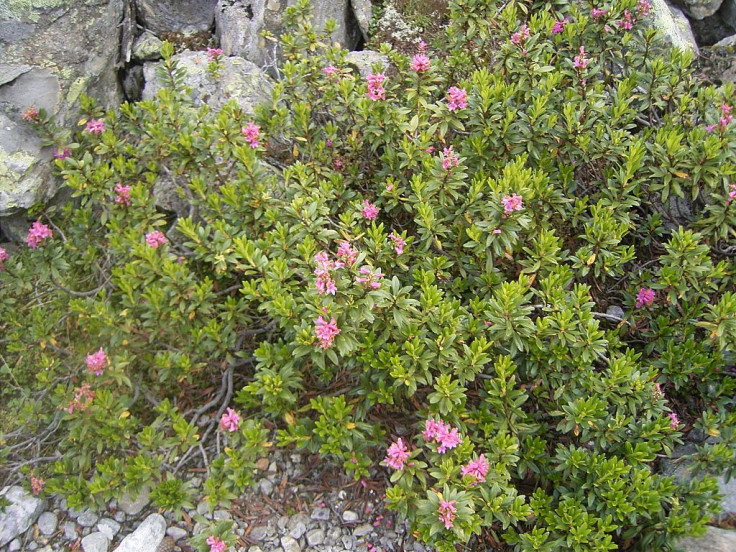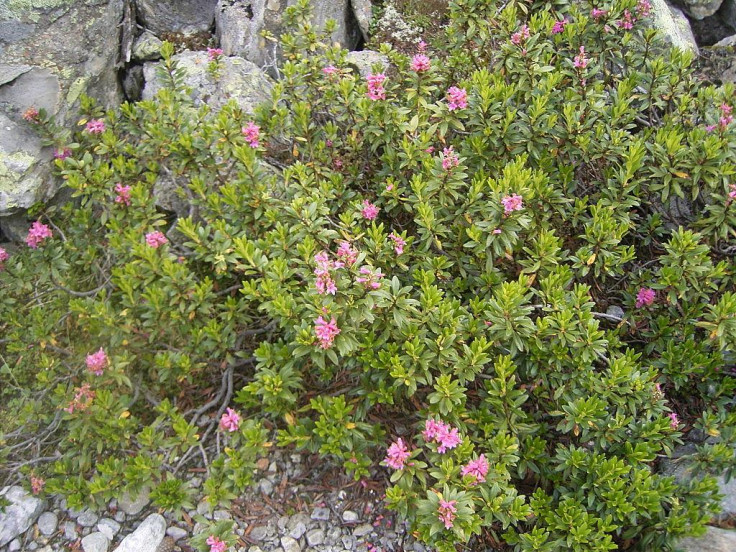Scientists Spot First Moth Species That Feeds On A Very Poisonous Plant

Researchers have unintentionally spotted the first known moth species whose caterpillars specialize in eating the notoriously poisonous alpine rose plant.
The rust-red alpine rose (Rhododendron ferrugineum) is a beautiful plant with lovely-looking flowers, but it's actually "highly poisonous," Pensoft noted. In fact, it is typically avoided by grazing animals, and "no insect the entire Alpine region was previously known to specialize on them."
But in July, during researchers' survey for butterflies as part of Biodiversity Monitoring Switzerland, they happened to have their break at an infested alpine rose bush. When the researchers came back later that month and then in August to look for caterpillars, they found even more of them.
"The accidental sighting of the first caterpillar in an alpine rose leaf was an absolute adrenaline rush, it was immediately clear that this must be an extraordinary species," Peter Huemer, one of the study authors, said as per Pensoft.
"The find was immediately surprising, as no specialized leaf-miners were previously known from this plant and therefore usually this plant remains disregarded by lepidopterists," the researchers wrote in their study, published in the journal Alpine Entomology. "The subsequently emerged moths were identified as Lyonetia ledi both according to external morphological features and by subsequent DNA barcoding."
This makes the alpine rose leaf-miner moth the first moth species known to mine this very poisonous plant. What the species' larvae do is drill into the skin of the leaf soon after hatching, Pensoft noted. The caterpillar spends its life inside the leaf skins, during which it eats the leaf from the inside. This helps protect the caterpillars from predators and bad weather. It only leaves when it's time for pupation.
The discovery was quite a surprise to the researchers, Pensoft noted. Apart from finding the creatures specializing in a particularly poisonous plant, the species is actually "widespread in northern Europe, northern Asia and North America." In northern Europe, it lives "exclusively" on swamp porst and Gagel bush, shrubs that are not in the Alps.
Furthermore, they found the population "highly isolated" in Engadine valley in Switzerland, which is about 440 kilometers away from the other closest confirmed population in north Lower Austria.
According to the researchers, it's possible that the swamp porst and alpine rose used to share a habitat during cold phases about 22,000 years ago.
"It is very likely that after the last cold period and the melting of the glaciers, some populations of the species shifted their host preference from the swamp porst to the alpine rose," Pensoft noted. "The separation of the distribution areas of the two plants caused by subsequent warm phases inevitably led to the separation of the moth populations."

Photo: Wikimedia Commons/Public Domain






